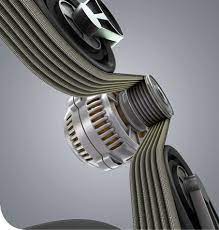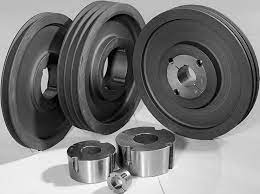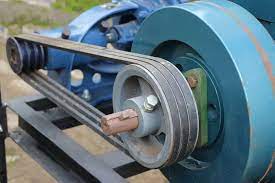Product Description
SCOOTER GY6-125CC motorcycle transmission parts motorcycle drive pulley,belt drive plate!
We can make with your samples and requirements!
Our motorcycle clutch assy,made by qualified material,has been exported to many different clients and countries.we can also supply accessories for clutch assy,like brake disc and clutch hub etc.
| Information | |
| Model for | GY6125CC |
| Package | LPI package |
| Trademark | LPI |
| OEM/Not OEM | OEM available |
More motorcycle parts we can supply!
| Motorcycle parts we can supply | |
| Engine parts | Cylinder head,Cylinder kit(Piston),Valve set,Arm rocker,Chain set(big sprocket,small sprocket,chain),Bearing,Clutch assy(clutch gear,clutch plates,clutch cover),Drive plate assy(weighing rollers,ace driven),Transmission assy( transmission belt,transmission,kick shaft,shift lever),Carburetor |
| Electrical parts | Stator,Stater motor,Ignition coil,Rectifier,CDI,Lock set(lock,cap) |
| Frame parts | Brake shoes,Brake disk,Barke pump assy,Fr&Re hub,Front hub iron,Rim,Brake pads,Rubber damper,Speedometer gear,Fuel cock,Speedometer,Turning light,Headlight,Tail light,Mirror,Fr&Re absorber,Horn,Cables(speedometer cable,throttle cable,brake cable),Battery,Battery |
| Body parts | Oil tank,Side cover,Front&Rear fender,Upper handie cover,Medification front cover,Front protector cover,Down cover,Side cover cap,Lnner box fairing |
| Motorcycle accessory | Handle grips,Nuts,Glooves |
More available parts for: Motorcycle,Atv,Pocket bike,Dirtbike etc
| HONDA | CG125 CG150 CG200 GY650( 125 150) C70 C90 C100 C110 CUB90 WAVE100 WAVE110 WS110 WAVE125 CB125 CB150 SH125 SH150 TMX125 XRM125 WH125 |
| YAMAHA | 3KJ50 BWS MBK YB50 2JA JOG50 CRYPTON110 XC125 Y110 RX115 JY110 YBR125 MAJESTY250 CYGNUS X125 MIO NOUVO JUPITER-MX RXS115 |
| SUZUKI | GN125 GN150 AX100 GS125 AD50 AG50 HJ125 SMASH110 |
| KAWASAKI | BC175 KRISS BAJAJ-CT100 BAJAJ-CNG125 |
| ITALIKA | CS125, DS125, XS125/150, DS150, GS150, WS150, ST70, STRADA70, ST90, AT110, ARGENTA110, FT110/125/150, XT110, FORZA150 |
| BAJAJ | BOXER CT100, PULSAR135/150/180/200, DISCOVER125/135, PLATINO100/125 |
About TTP:
TTP POWER DEVELOPMENT(HangZhou) CO.,LTD was founded in 2001s,which is responsible for the work related to assembly factories,repair shops and after-sales services. We mainly engaged in high-quality motorcycle spare parts exportation. With outstanding brand LPI,RACING BEE,TTP exports large quantity every year to European countries,South American countries,Middle East countries and Southeast Asia countries,etc. We offer different genuine parts for different motorcycle models,motorcycle engine assembly,motorcycle engine parts,motorcycle body parts,motorcycle accessories,also parts for POCKET BIKE,ATV,SCCOTER. With very kinds of variety parts,our clients fond of making long term corporation replationship with us.
The products are in high quality,beautiful design and reasonable price,with support of innovating R&D,the company always focuses on quality of products and services for every important customer and makes it as its whole life purpose.
| After-sales Service: | One Year |
|---|---|
| Warranty: | One Year |
| Material: | Aluminium/Aluminum Alloy |
| Certification: | SGS |
| MOQ: | 300 PCS |
| Delivery: | 30 Days |
| Customization: |
Available
| Customized Request |
|---|

What are some real-world examples of drive belt pulley applications in various industries?
There are numerous real-world examples of drive belt pulley applications across various industries. Here’s a detailed explanation of some common examples:
1. Automotive Industry:
– Engine Systems: Drive belt pulleys are used in automotive engines to transmit power from the crankshaft to various engine accessories, such as the alternator, power steering pump, water pump, and air conditioning compressor. These pulleys ensure the proper functioning of these components and provide efficient power distribution in the engine system.
– Timing Systems: Timing pulleys and belts are employed in automotive engines to synchronize the rotation of the camshaft and crankshaft. This precise timing is crucial for the opening and closing of engine valves in coordination with the piston movement, ensuring optimal engine performance and fuel efficiency.
2. Industrial Machinery:
– Conveyor Systems: Drive belt pulleys are utilized in conveyor systems to transfer power from motors to conveyor belts. They enable the movement of materials, products, or components along the conveyor line, facilitating efficient material handling in industries such as manufacturing, logistics, and mining.
– Machine Tools: Drive belt pulleys are found in various machine tools, such as lathes, milling machines, and drills, to transmit power from the motor to the spindle or cutting tool. These pulleys allow for precise speed control and power transmission, ensuring accurate machining operations.
– Printing Presses: Timing pulleys and belts are used in printing presses to synchronize the movement of printing plates, ensuring precise registration and consistent print quality. The pulleys enable accurate timing and reliable power transmission for the complex mechanisms involved in the printing process.
3. HVAC Systems:
– Air Handling Units: Drive belt pulleys are employed in air handling units to drive fans and blowers that circulate air in heating, ventilation, and air conditioning (HVAC) systems. These pulleys enable efficient airflow and temperature control in commercial and residential buildings.
4. Agricultural Machinery:
– Tractors and Farm Equipment: Drive belt pulleys are used in tractors and various farm equipment to transfer power from the engine to components such as pumps, augers, conveyors, and cutting mechanisms. These pulleys enable tasks like plowing, planting, harvesting, and material handling in agricultural operations.
– Harvesting Machinery: Agricultural machinery like combines and forage harvesters employ drive belt pulleys to power the cutting mechanisms, threshing systems, and grain separation mechanisms. These pulleys ensure efficient harvesting and grain processing in the agricultural industry.
5. Fitness Equipment:
– Treadmills and Exercise Bikes: Drive belt pulleys are utilized in fitness equipment like treadmills and exercise bikes to transfer power from the motor to the running belt or pedals. These pulleys allow for adjustable speed control and smooth operation, providing users with an effective workout experience.
6. Construction Equipment:
– Concrete Mixers: Drive belt pulleys are used in concrete mixers to transmit power from the engine to the mixing drum. These pulleys enable efficient mixing of concrete during construction projects, ensuring uniformity and consistency in concrete production.
– Cranes and Hoists: Drive belt pulleys can be found in cranes and hoists to transmit power from the motor to the lifting mechanisms. These pulleys provide the necessary torque and speed control for lifting heavy loads in construction sites and industrial settings.
These examples highlight the wide range of applications of drive belt pulleys across industries, from automotive and industrial machinery to HVAC, agriculture, fitness equipment, and construction. Drive belt pulleys play a crucial role in power transmission, speed control, and reliable operation in various mechanical systems, contributing to the efficiency and functionality of these industries.

How do drive belt pulleys impact the performance of industrial machinery?
Drive belt pulleys play a significant role in the performance of industrial machinery. Here’s a detailed explanation of how drive belt pulleys impact the performance of industrial machinery:
1. Power Transmission:
Drive belt pulleys are responsible for transmitting power from the motor or engine to various components of industrial machinery. They provide the mechanical linkage between the power source and driven equipment, such as pumps, compressors, conveyors, and machines. The design and quality of the pulleys directly affect the efficiency and reliability of power transmission, impacting the overall performance of the machinery.
2. Speed Control:
Drive belt pulleys are instrumental in controlling the rotational speed of driven equipment. By using pulleys of different sizes or employing pulley systems with multiple belts, the speed ratio can be adjusted to meet specific operational requirements. This allows for precise control of machinery speed, which is crucial in applications that require varying operating speeds or synchronization with other processes.
3. Torque Transfer:
Drive belt pulleys facilitate the transfer of torque from the motor or engine to the driven equipment. The pulley design, including its diameter, groove size, and belt type, determines the torque-carrying capacity. Properly sized and designed pulleys ensure that the required torque is effectively transferred to the driven components, enabling the machinery to perform the necessary tasks with adequate force.
4. Belt Tension and Stability:
Drive belt pulleys help maintain proper belt tension, which is crucial for the stability and performance of industrial machinery. Tensioned belts ensure reliable power transmission by preventing slippage and maintaining sufficient contact between the pulleys and belts. The pulley design may include features such as tensioning mechanisms or adjustable pulley positions to facilitate proper belt tensioning and stability.
5. Load Distribution:
Drive belt pulleys aid in distributing the load across the machinery’s components. By properly sizing and aligning the pulleys, the load can be evenly distributed among the belts, pulleys, and driven equipment. This helps prevent excessive wear and stress on individual components, prolonging their lifespan and ensuring the overall performance and durability of the machinery.
6. Noise and Vibration Reduction:
Well-designed drive belt pulleys contribute to reducing noise and vibration levels in industrial machinery. Proper alignment, balance, and surface quality of the pulleys minimize vibration and noise generation during operation. This enhances the working environment, reduces operator fatigue, and improves overall equipment performance.
7. Maintenance and Serviceability:
The design of drive belt pulleys can impact the ease of maintenance and serviceability of industrial machinery. Pulleys that are accessible, have removable covers or guards, and allow for straightforward belt replacement or tension adjustment simplify maintenance procedures. This reduces downtime and ensures that the machinery remains operational and productive.
8. System Flexibility and Adaptability:
Drive belt pulleys offer flexibility and adaptability in industrial machinery. They allow for the integration of different power sources and driven equipment, enabling customization and expansion of the machinery’s capabilities. By changing pulley sizes or configurations, the machinery can be adapted to different operating conditions, power requirements, or production demands.
Overall, drive belt pulleys have a crucial impact on the performance of industrial machinery. They facilitate power transmission, speed control, torque transfer, belt tension, load distribution, noise reduction, maintenance, and system flexibility. Proper selection, design, and maintenance of drive belt pulleys are essential to optimize the performance, efficiency, and reliability of industrial machinery.

Can you explain the key components and design features of a drive belt pulley?
A drive belt pulley consists of several key components and design features that enable its efficient operation and power transmission. Here’s a detailed explanation of these components and features:
1. Pulley Wheel:
The pulley wheel is the main component of a drive belt pulley. It is typically a cylindrical or disk-shaped wheel with a grooved rim. The wheel is designed to accommodate the belt and provide a surface for power transmission. The grooves on the rim match the shape and size of the belt, ensuring a secure fit and optimal power transfer.
2. Grooves:
The grooves on the pulley wheel’s rim are an essential design feature. They provide the necessary contact points for the belt, ensuring a firm grip and preventing slippage during power transmission. The grooves can have different shapes, such as V-shaped or multi-ribbed, depending on the type of belt used.
3. Belt Alignment Guides:
Drive belt pulleys often include alignment guides to ensure proper positioning and alignment of the belt. These guides can be raised ridges or flanges located on the sides of the pulley. They help keep the belt in place and prevent it from slipping off the pulley, especially in high-tension applications.
4. Hub or Bore:
The hub or bore is the central opening in the pulley wheel where it attaches to the shaft of the power source. The hub is typically designed to fit snugly onto the shaft, ensuring a secure connection and efficient power transfer. It may include keyways, splines, or set screws to prevent rotation or slippage on the shaft.
5. Material and Construction:
Drive belt pulleys are commonly made of durable materials such as metal or plastic. Metal pulleys, such as steel or cast iron, are favored for their strength and resistance to wear. Plastic pulleys, often made of reinforced nylon or polyurethane, are lightweight, corrosion-resistant, and suitable for applications where reduced noise and vibration are desired.
6. Size and Diameter:
The size and diameter of the drive belt pulley play a crucial role in determining the speed ratio and power transmission characteristics. By altering the diameter or using pulleys of different sizes, the rotational speed and torque can be adjusted to meet specific requirements. Different pulleys within a system may have varying diameters to create speed variation or torque multiplication.
7. Tensioning Mechanism:
In some applications, drive belt pulleys may incorporate a tensioning mechanism. This mechanism allows for the adjustment of belt tension to ensure proper power transmission and prevent slippage. Tensioning mechanisms can include spring-loaded arms, adjustable brackets, or sliding mounts that enable easy tension adjustment and maintenance.
8. Bearing or Bushing:
Drive belt pulleys often include bearings or bushings to facilitate smooth and efficient rotation. These components reduce friction between the pulley and the shaft, allowing for improved power transmission and longevity of the pulley system. Bearings can be ball bearings, roller bearings, or plain bushings depending on the specific application and load requirements.
These key components and design features collectively contribute to the functionality, reliability, and performance of drive belt pulleys. By providing a secure fit for the belt, maintaining proper alignment, accommodating tension adjustments, and utilizing durable materials, drive belt pulleys ensure efficient power transmission and contribute to the smooth operation of mechanical systems in various applications.


editor by CX
2023-09-22